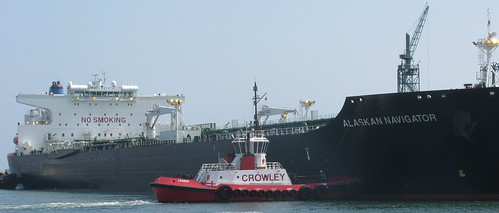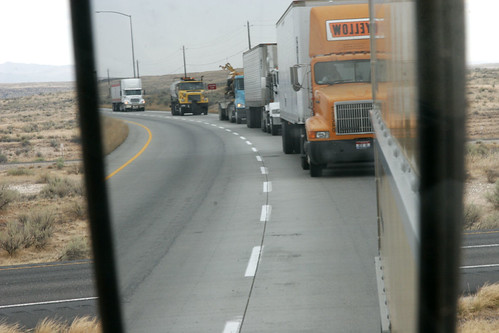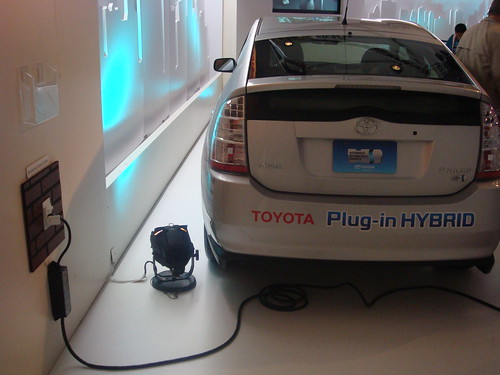Thursday, June 11, 2009 – ISSN 1529-1057
Registration Now Open for IBTTA’s 77th Annual Meeting and Exhibition: The Transformation of Transportation
IBTTA’s 77th Annual Meeting & Exhibition, September 13-16, 2009, in Chicago, Illinois is the most significant gathering of toll industry professionals and business partners in the world. Delegates from 25 countries on six continents will meet in Chicago to examine best practices and critical innovations in toll industry finance, marketing, technology and innovation, customer service, sustainability, operations, and related issues. Register by August 14 and receive a $100 discount off your registration fee. This meeting is hosted by the Illinois Tollway and will be held at the Hyatt Regency. For more information on registration, hotel reservations, exhibiting or sponsorship, visit IBTTA’s website at www.ibtta.org. Register online today!
AVIATION
1) Air France CEO ‘Not Convinced’ Sensors Caused Crash
Link to AP story:
http://www.google.com/hostednews/ap/article/ALeqM5iOegnahAFcEgwJZ4WKGkVz9Dgq5wD98OCJ1G0
2) LAX to Unveil New Warning System on Taxiways, Runway
Link to story in the Los Angeles Times:
http://www.latimes.com/news/local/la-me-runway11-2009jun11,0,2675433.story
3) Clarksville-Montgomery Airport Authority Keeps Public Out
Board claims it has exemption from Tennessee’s open meetings law.
Link to story in The Leaf-Chronicle:
http://www.theleafchronicle.com/article/20090611/NEWS01/906110332/Airport+Authority+keeps+public+out
4) Federal Aviation Administration Launches Safety Site
Link to story on Nextgov:
http://techinsider.nextgov.com/2009/06/faa_launches_safety_site_after.php
Link to site: http://www.faa.gov/about/safety_efficiency/
CARTOGRAPHY
5) Doubts About GPS as Map Sales Surge
Link to transcript on the Australian Broadcasting Corporation’s The World Today:
http://www.abc.net.au/worldtoday/content/2008/s2595458.htm
GPS / NAVIGATION
6) GPS-Fitted Shoe Helps Track Alzheimer Patient
Link to AFP story:
http://www.physorg.com/news163474344.html#
ROADWAYS
7) MIT Works to Solve Traffic Jam Problem
Mathematicians are working on the development of a new model to explain how and why ‘phantom’ traffic jams form.
Link to story on DailyTech:
http://www.dailytech.com/MIT+Works+to+Solve+Traffic+Jam+Problem/article15380c.htm
SAFETY / SECURITY
8) Registered Traveler, Cargo Screening Raise Concerns at TSA Budget Hearing
Link to story from Congressional Quarterly Homeland Security:
http://www.airportbusiness.com/online/article.jsp?siteSection=1&id=28754
TELEMATICS
9) New Innovations at Telematics Detroit Overshadowed by Auto Industry News
Link to story on 12 Volt News:
http://www.12voltnews.com/?p=5095
TRAVELER INFORMATION / TRANSPORTATION MANAGEMENT
10) Edmonton Committee Investigates ‘Smart’ Traffic System
Link to story in The Edmonton Sun:
http://www.edmondsun.com/local/local_story_162003843.html
11) Bengaluru Traffic Police Use Technology in the Centralized Traffic Management Center for More Efficient Traffic Management
Link to story on Citizen Matters:
http://bangalore.citizenmatters.in/articles/view/1148-bengaluru-traffic-management-centre
12) Isle of Man Traffic Management Plan Put to Test by Race
Link to story in the Manx Independent:
http://www.iomtoday.co.im/news/TT-traffic-management-plan-is.5356621.jp
13) Smarter Brisbane Transport Plans Urged
Link to story in Cargonews Asia:
http://www.cargonewsasia.com/secured/article.aspx?id=3&article=19621
VEHICLES
14) QNX and Pandora Team to Bring Internet Radio to the Car
Link to story and video in Radio World:
http://www.rwonline.com/article/82306
News Releases
1) Com Dev to Offer Space-Based Maritime Automatic Identification System Services Beginning in 2010
2) Volvo Technology Selected to Lead New York CVII Development Program
Upcoming Events
Mobile Strategies for Travel USA – September 16-17 – Chicago
http://events.eyefortravel.com/tdsusa/mobile-travel/
Today in Transportation History
1959 **50th anniversary** – The Hovercraft, a vehicle which floats on a cushion of air over land and water, was officially launched off the south coast of England.
http://news.bbc.co.uk/onthisday/hi/dates/stories/june/11/newsid_4333000/4333329.stm
1959 **50TH anniversary** – Honda opened it first US dealership.
http://world.honda.com/history/challenge/1959establishingamericanhonda/img/american_pho_01.jpg
============================================================================================
The Transportation Communications Newsletter is published electronically Monday through Friday.
To subscribe send an e-mail to: TCNL-subscribe@googlegroups.com
To unsubscribe send an e-mail to: TCNL-unsubscribe@googlegroups.com
TCN archives: http://groups.yahoo.com/group/transport-communications
Questions, comments about the TCN? Please write the editor, Bernie Wagenblast ati95berniew@aol.com.
© 2009 Bernie Wagenblast






 In an interview with ACE, a leading automotive club representing the interests of 550.000 Germans, the Environment Minister Sigmar Gabriel has taken a clear stance in favour of CO2 in the currently hotly debated question of which refrigerant to choose for future car air conditioning systems:
In an interview with ACE, a leading automotive club representing the interests of 550.000 Germans, the Environment Minister Sigmar Gabriel has taken a clear stance in favour of CO2 in the currently hotly debated question of which refrigerant to choose for future car air conditioning systems:



